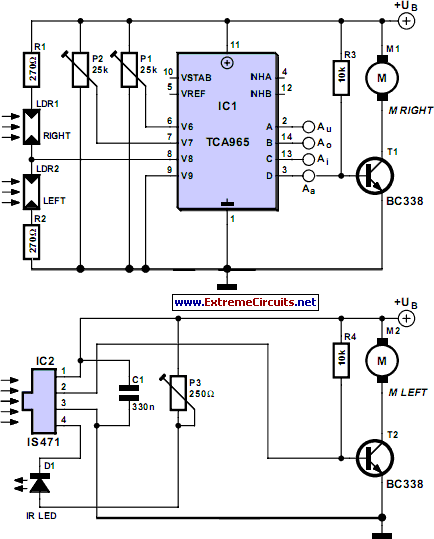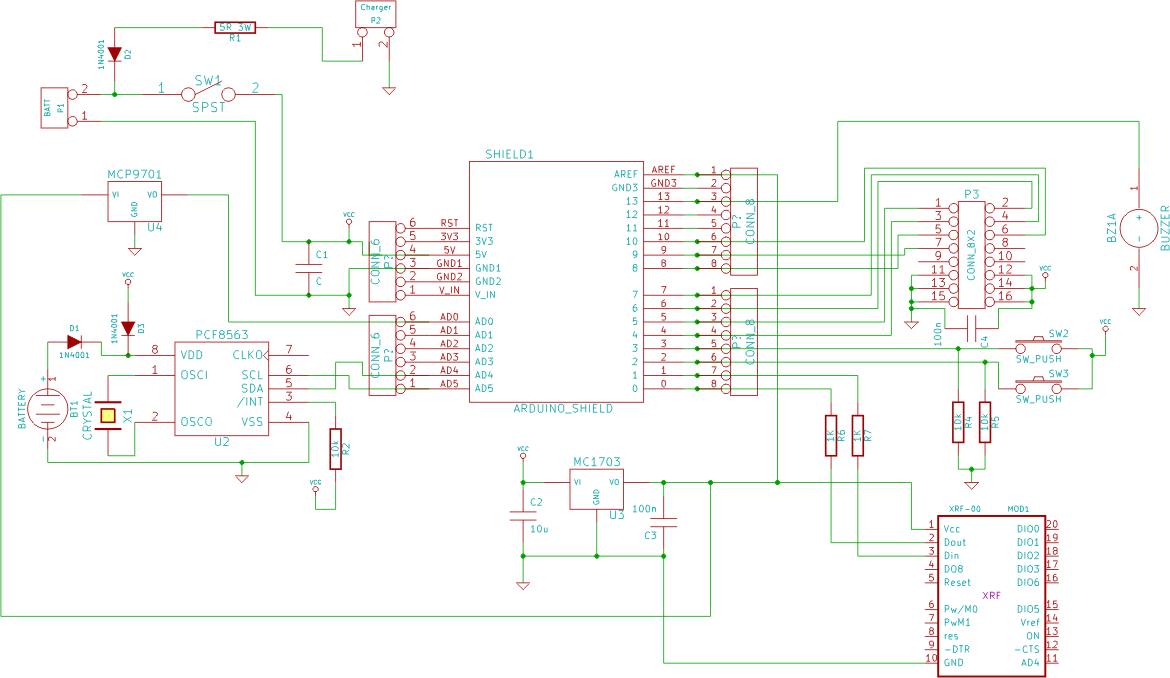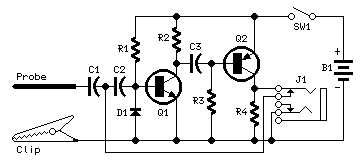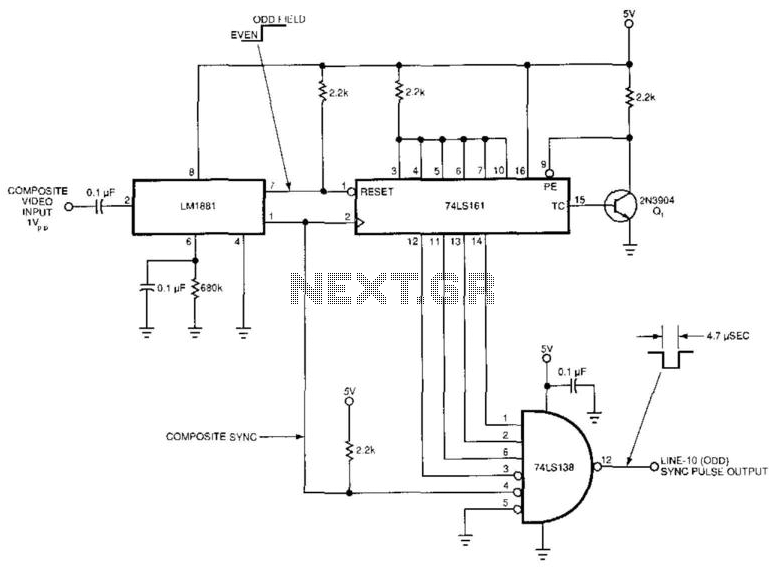
LINE TRACER ROBOT WITHOUT MICROCONTROLLER
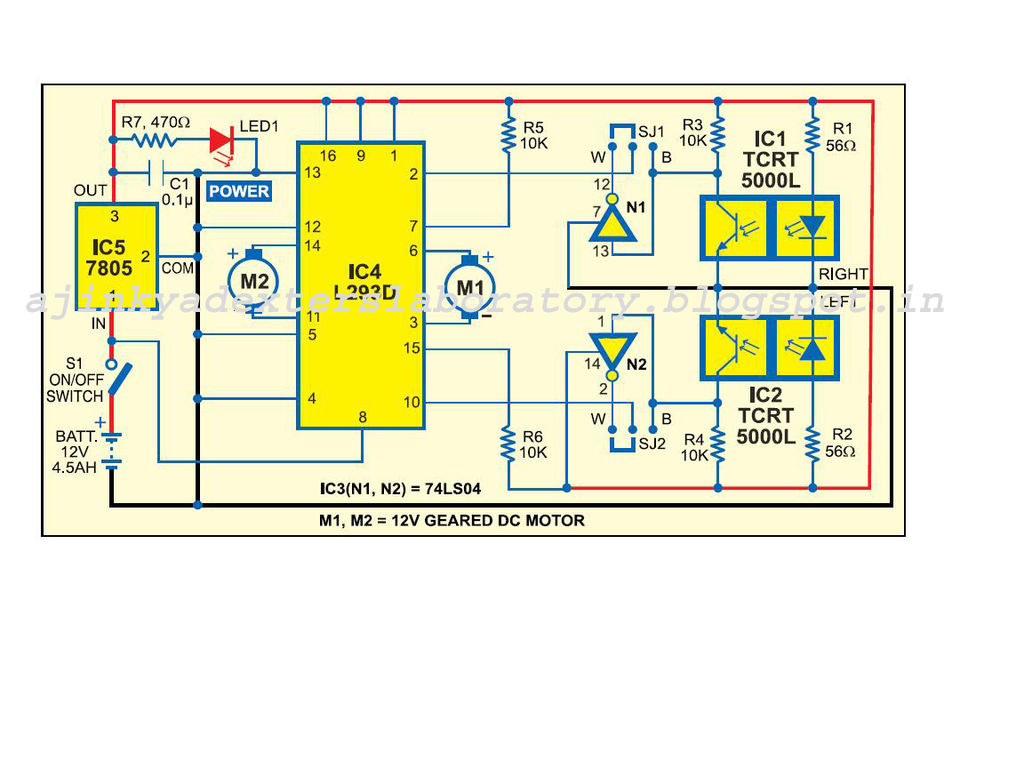
Carefully examine the following circuit diagram and attempt to construct the circuit on a breadboard first. If it functions correctly, proceed to create its PCB version.
The circuit diagram serves as a blueprint for constructing an electronic circuit on a breadboard, which is a temporary platform for prototyping and testing. The initial step involves analyzing the schematic to understand the arrangement of components, their connections, and the overall functionality of the circuit.
Once the circuit is assembled on the breadboard, it is crucial to verify its performance by applying power and testing the output against expected results. This may involve measuring voltages, currents, and signal integrity using appropriate test equipment such as multimeters or oscilloscopes. If the circuit operates as intended, the next phase involves designing a printed circuit board (PCB) layout.
Creating a PCB version requires translating the breadboard layout into a schematic design software, where the circuit connections are optimized for a compact and efficient layout. The PCB design must include considerations for trace widths, component placement, and the routing of power and signal paths to minimize interference and ensure reliability. After finalizing the design, the PCB can be fabricated, allowing for a more permanent and robust implementation of the circuit.
This process emphasizes the importance of thorough testing and verification at each stage to ensure the circuit's functionality and reliability in its intended application.Now Look carefully following circuit Diagram & try out the circuit on bread board first. if it is working properly go to making its PCB version. the P.. 🔗 External reference
The circuit diagram serves as a blueprint for constructing an electronic circuit on a breadboard, which is a temporary platform for prototyping and testing. The initial step involves analyzing the schematic to understand the arrangement of components, their connections, and the overall functionality of the circuit.
Once the circuit is assembled on the breadboard, it is crucial to verify its performance by applying power and testing the output against expected results. This may involve measuring voltages, currents, and signal integrity using appropriate test equipment such as multimeters or oscilloscopes. If the circuit operates as intended, the next phase involves designing a printed circuit board (PCB) layout.
Creating a PCB version requires translating the breadboard layout into a schematic design software, where the circuit connections are optimized for a compact and efficient layout. The PCB design must include considerations for trace widths, component placement, and the routing of power and signal paths to minimize interference and ensure reliability. After finalizing the design, the PCB can be fabricated, allowing for a more permanent and robust implementation of the circuit.
This process emphasizes the importance of thorough testing and verification at each stage to ensure the circuit's functionality and reliability in its intended application.Now Look carefully following circuit Diagram & try out the circuit on bread board first. if it is working properly go to making its PCB version. the P.. 🔗 External reference

